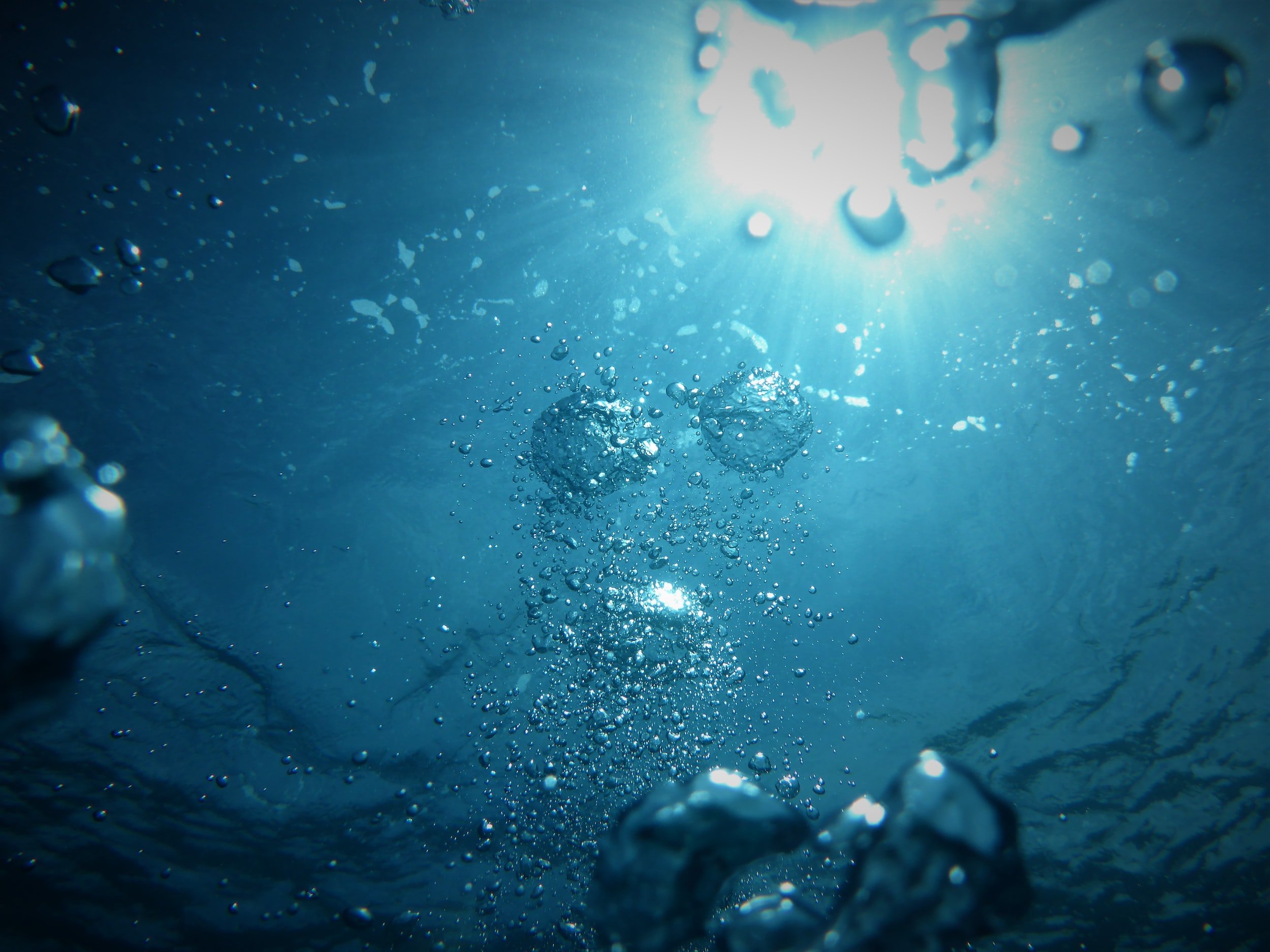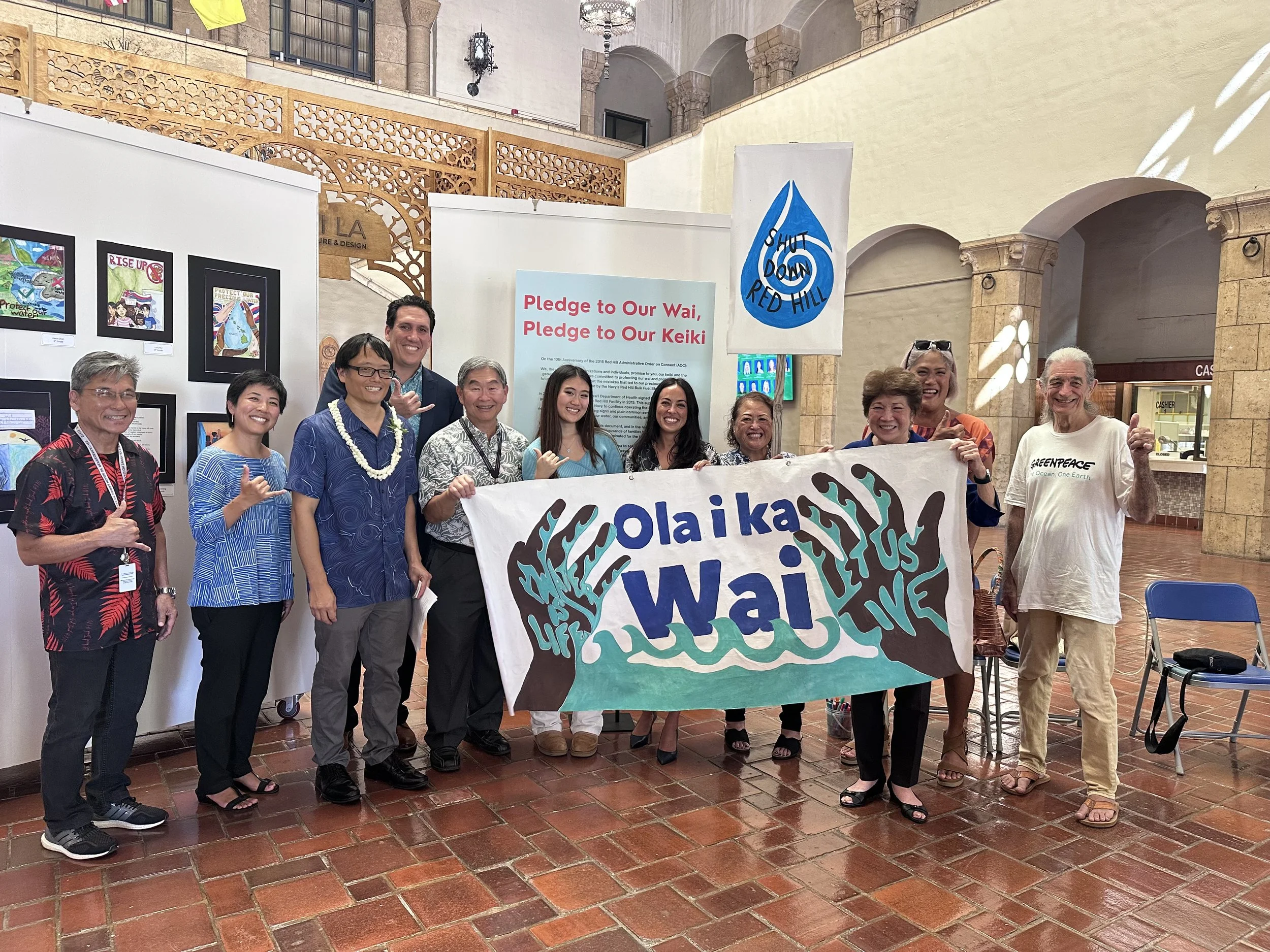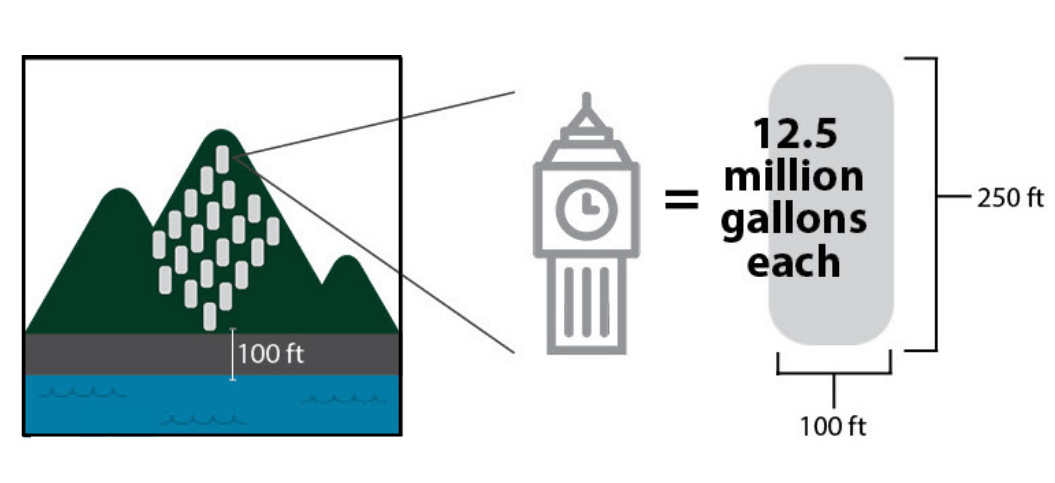
Restore Kapūkakī
Clean up Red Hill
Thousands of people were poisoned by the US Navy’s Red Hill Bulk Fuel Storage Facility when over 19,000 gallons of fuel leaked from the facility into the Navy’s water system in 2021.
Years of advocacy culminated in the draining of the massive fuel tanks but impacted families’ physical and mental health continue to suffer and
Oʻahu’s drinking water future remains uncertain.
Photo: Jason Lees
Quick links:
Latest Red Hill updates
In November 2021, a fuel leak from the US Navy’s Red Hill Bulk Fuel Storage Facility poisoned the water system for nearly 100,000 residents,
sending thousands to seek medical care as they suffered from acute petroleum exposure. Those poisoned, including children, pregnant women, service members, and pets experienced headaches, rashes, vomiting, dizziness, and breathing difficulties for weeks and months on end. Some continue to suffer from complications years later, while others are still reporting fuel sheens in their water and experiencing symptoms of petroleum exposure despite Navy claims that the water is safe to consume.
The contamination forced the Honolulu Board of Water Supply to indefinitely shut down adjacent municipal wells, including its major Hālawa shaft, plunging Oʻahu into a water crisis that threatens water conservation mandates and shutdowns for many years to come.
People power prevails, but Red Hill isn’t pau yet
It wasn’t until over a month after the leak, and after overwhelming outcry from the people of Hawaiʻi and nearly every level of lawmaker, as well as legal action by the Sierra Club of Hawaiʻi, that the Navy agreed to defuel the Red Hill tanks. The Navy successfully removed the majority of the fuel from the facility and its pipelines running to Joint Base Pearl Harbor-Hickam, but approximately 4,000 gallons of fuel and 28,000 of fuel sludge remain in the pipes and tanks.
Every day that any fuel remains in the Red Hill tanks is another day that health of Oʻahu’s people and ʻāina remain in danger. Once fuel reaches the water supply, it cannot be removed and it is still unclear how fuel moves through the underground aquifers.
Long road to remediation
Since construction in 1943, the Red Hill facility has leaked at least 200,000 gallons of fuel into the surrounding environment. This includes the 19,000 gallons of fuel-water mixture in November 2021, 1,600 gallons of fuel in May 2021, 27,000 gallons of fuel in January 2014 and an unknown amount of fuel starting in early 2020 at Puʻuloa Hotel and Kilo piers.
Defueling is only the first step in a long road to the remediation of Oʻahu’s wai and ʻāina that was contaminated by the US Navy over decades. The Navy’s long-term plans for the Red Hill facility, as well as plans to remediate the contamination, remain unclear. Hawaiʻi’s congressional delegation secured $1 billion for the clean up of Red Hill in 2023 but the community remains weary that clean up efforts will be successful.
There have been recent commitments made by state and county officials, under the Red Hill Water Alliance Initiative (WAI), to the remediation and further security of Oʻahu’s aquifer. However, concerns were raised about the WAI report, as it fails to hold government leaders and the Navy accountable for a decade of inaction and negligence that led to the Red Hill crisis; disregards the power of grassroots organizing that led to the defueling of the Red Hill tanks through the lack of investment in community capacity building; and tasks a single individual to oversee remediation under the politically susceptible Department of Land and Natural Resources.
Not just fuel, forever chemicals too
1,300 gallons of PFAS-containing firefighting foam was spilled during a maintenance activity at the Red Hill facility just a year after the 2021 fuel leak—further solidifying the Navy’s mismanagement of the massive facility and deepening the distrust that the Navy’s defueling and decommissioning of the facility would be successful.
This was not the first time that the toxic firefighting foam spilled at the facility in the recent past but the Navy has failed to notify the Hawaiʻi Health Department and US Environmental Protection Agency (EPA) about previous spills, raising questions about vast PFAS contamination truly is at Red Hill. Unsurprisingly, the Red Hill facility’s firefighting system has long been problematic, including an entire year where the system was only partially operational, putting the workers’ safety, as well as the nearby communities, at risk.
Photo: Joint Task Force Red Hill
In early 2024, the EPA found widespread PFAS contamination in the soil and groundwater surrounding the Red Hill facility. 6 of the 21 groundwater wells tested exceeded the EPA’s standards for PFAS, indicating a much larger problem of PFAS at Red Hill beyond the 2022 spill. Despite these alarming test results, the Navy has no immediate plans for further testing or remediation of PFAS contamination at the facility.
Per- and polyfluoroalkyl substances, or PFAS, called forever chemicals because they do not break down in the environment and are known to bioaccumulate. PFAS are linked to a variety of health risks, including cancer, liver and thyroid problems, reproductive problems, high blood pressure, low birthweight, and increased risk of birth defects, among others. The EPA recently established its first-ever enforceable standards for PFAS in drinking water.
More about the Red Hill Bulk Fuel Storage Facility
The US Navy’s Red Hill Bulk Fuel Storage Facility was constructed in the 1940s specifically for World War II, built underground in Kapūkakī, the mountain ridge located between Hālawa and Moanalua, to be “shielded from an enemy attack.” The facility stored over 200 million gallons of fuel in twenty 250 foot tall tanks, just 100 feet above Oʻahu’s primary drinking water supply for over 400,000 people.
Following the 2014 fuel leak, the US Navy, Defense Logistics Agency, Environmental Protection Agency, and Hawaiʻi Department of Health entered into an administrative agreement to study and address concerns regarding the Red Hill facility. For years, the US Navy dragged its feet, submitted insufficient studies, and disregarded warning signs, while regulators and lawmakers failed to heed the community’s calls for action and mounting concerns about the safety of their water—which all culminated in the disastrous, and avoidable, 2021 leak that poisoned thousands.
Sierra Club litigation on Red Hill
2021: The Sierra Club successfully intervenes in the state’s emergency order forcing the Navy to suspend operations and defuel the Red Hill tanks following the November leak that poisoned thousands. The Sierra Club, represented by Earthjustice, intervened to ensure that the Department of Health held the Navy accountable and followed through with the process to shut down the facility.
2021: The Sierra Club and the Honolulu Board of Water Supply challenged the Navy’s permit application to operate the Red Hill tanks because it failed to prove the tanks will not leak, will not affect Oʻahu’s groundwater, or demonstrate a practicable tank upgrade alternative. The hearings officer issues a recommended decision and order finding that the Red Hill facility is inherently dangerous, but that operations should be allowed to continue with certain inspection and repair requirements that would effectively shut down 8 of the tanks. The contested case goes on to be reopened several times—first when 1,000 gallons leak in May and again in October when a whistleblower confirms the Navy withheld information during the hearing.
2019: The Sierra Club sued the Department of Health to prevent the automatic permit approval of underground storage tanks. The department’s proposed rule amendments allowed underground storage tanks permit applications—including Red Hill—to be automatically approved after 180 days. The department went on to amend the rules to remove the problematic language and in 2020 the Environmental Court ruled this change was sufficient to address the lawsuit.
2017: The Sierra Club successfully sued the Hawaiʻi Department of Health over the department’s exemption of the Red Hill tanks from underground storage tank regulations. The Environmental Court ultimately ruled that the exemption of the tanks was illegal and ordered the Health Department to update their regulations to remove the exemption.





























